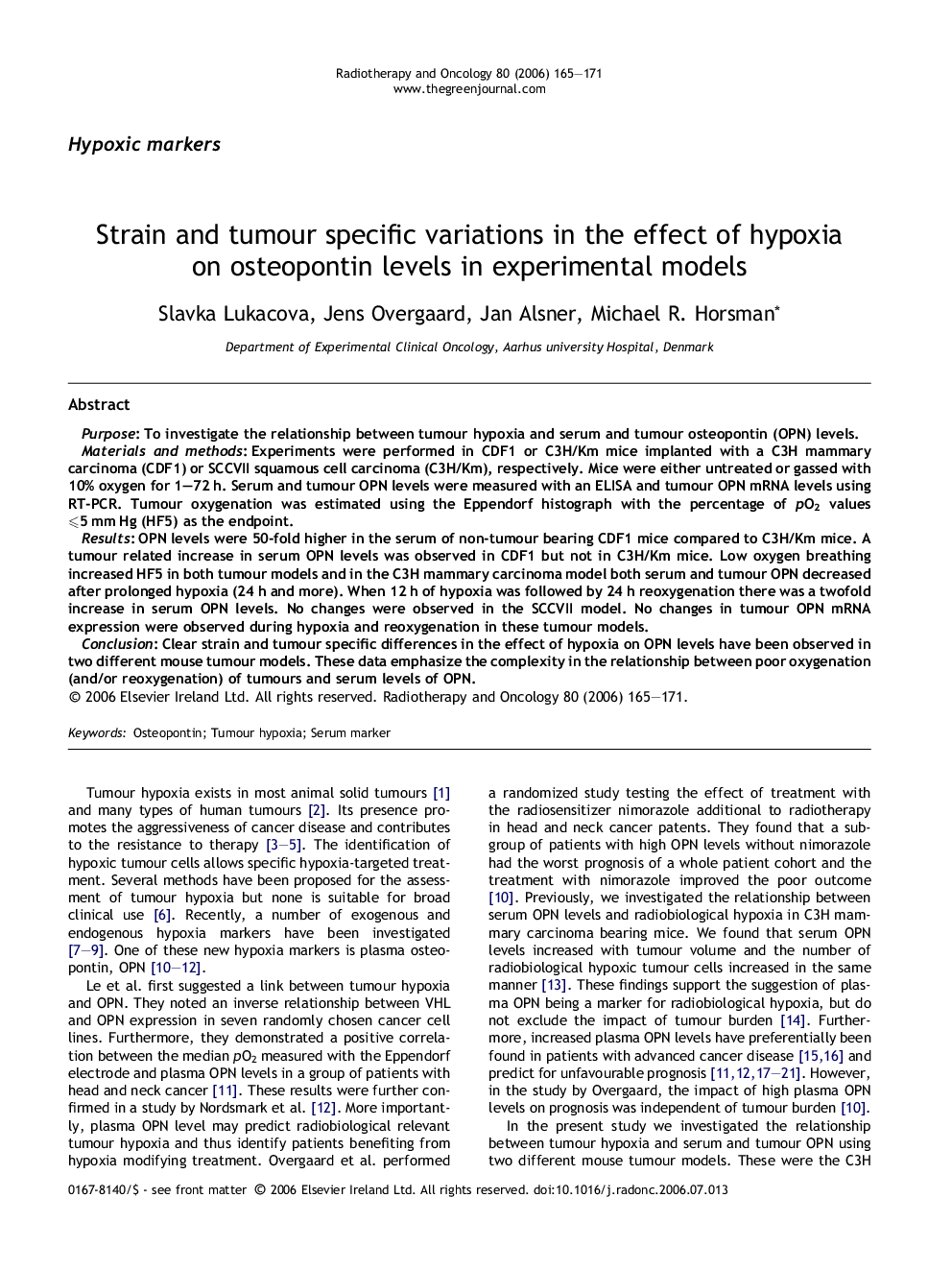| Article ID | Journal | Published Year | Pages | File Type |
|---|---|---|---|---|
| 2161319 | Radiotherapy and Oncology | 2006 | 7 Pages |
PurposeTo investigate the relationship between tumour hypoxia and serum and tumour osteopontin (OPN) levels.Materials and methodsExperiments were performed in CDF1 or C3H/Km mice implanted with a C3H mammary carcinoma (CDF1) or SCCVII squamous cell carcinoma (C3H/Km), respectively. Mice were either untreated or gassed with 10% oxygen for 1–72 h. Serum and tumour OPN levels were measured with an ELISA and tumour OPN mRNA levels using RT-PCR. Tumour oxygenation was estimated using the Eppendorf histograph with the percentage of pO2 values ⩽5 mm Hg (HF5) as the endpoint.ResultsOPN levels were 50-fold higher in the serum of non-tumour bearing CDF1 mice compared to C3H/Km mice. A tumour related increase in serum OPN levels was observed in CDF1 but not in C3H/Km mice. Low oxygen breathing increased HF5 in both tumour models and in the C3H mammary carcinoma model both serum and tumour OPN decreased after prolonged hypoxia (24 h and more). When 12 h of hypoxia was followed by 24 h reoxygenation there was a twofold increase in serum OPN levels. No changes were observed in the SCCVII model. No changes in tumour OPN mRNA expression were observed during hypoxia and reoxygenation in these tumour models.ConclusionClear strain and tumour specific differences in the effect of hypoxia on OPN levels have been observed in two different mouse tumour models. These data emphasize the complexity in the relationship between poor oxygenation (and/or reoxygenation) of tumours and serum levels of OPN.
